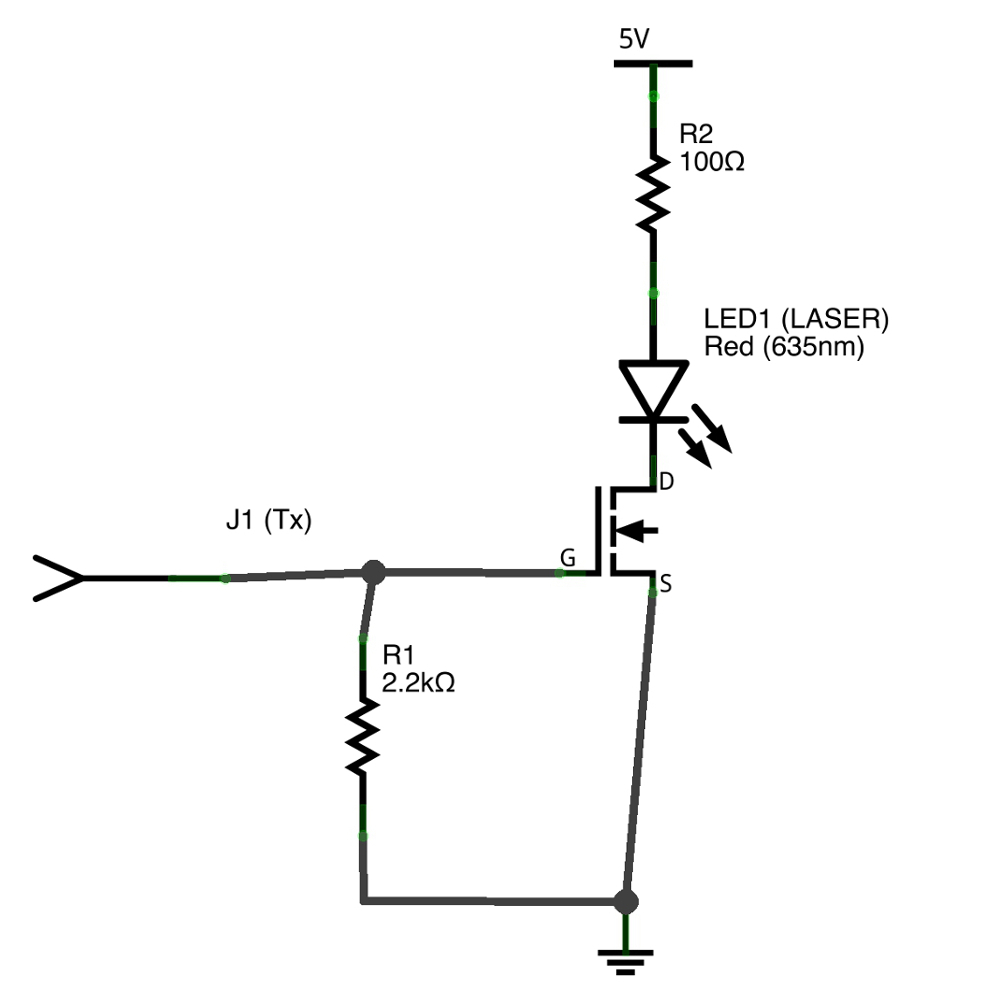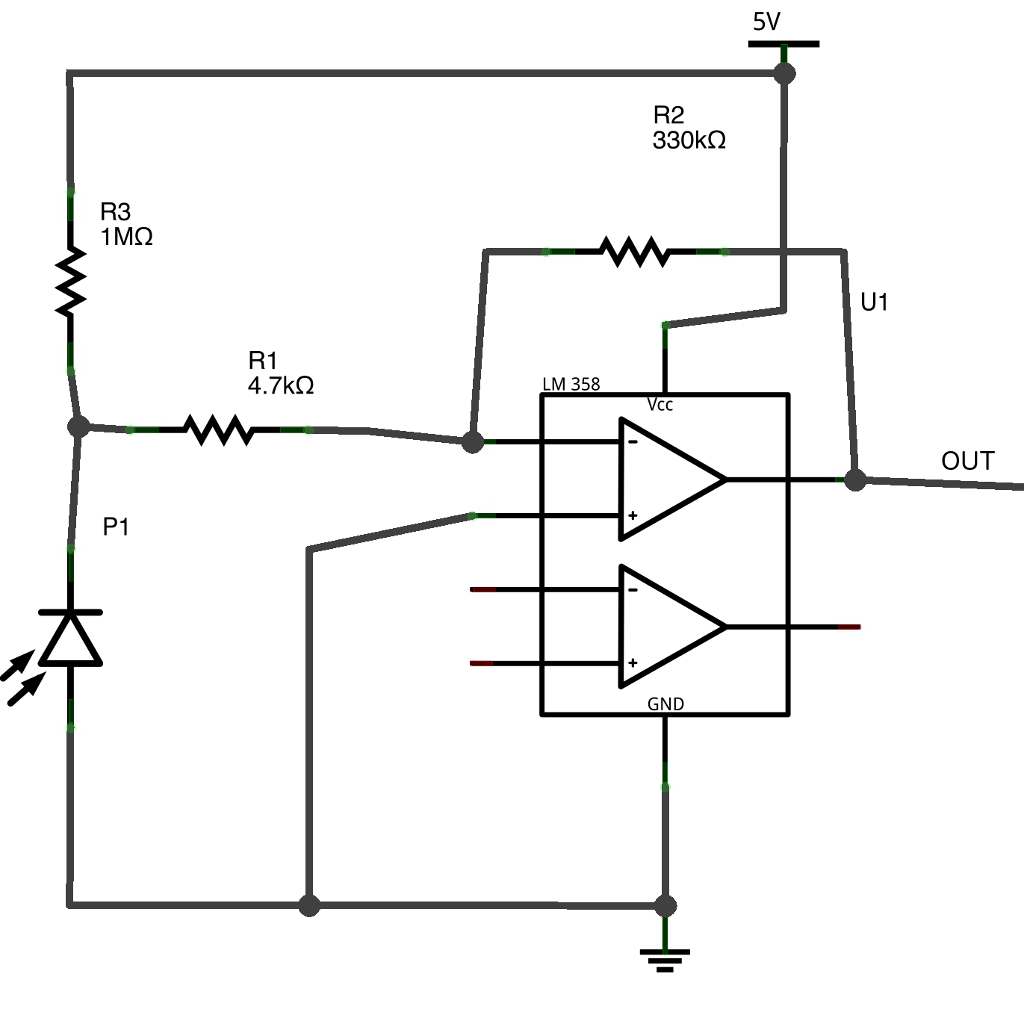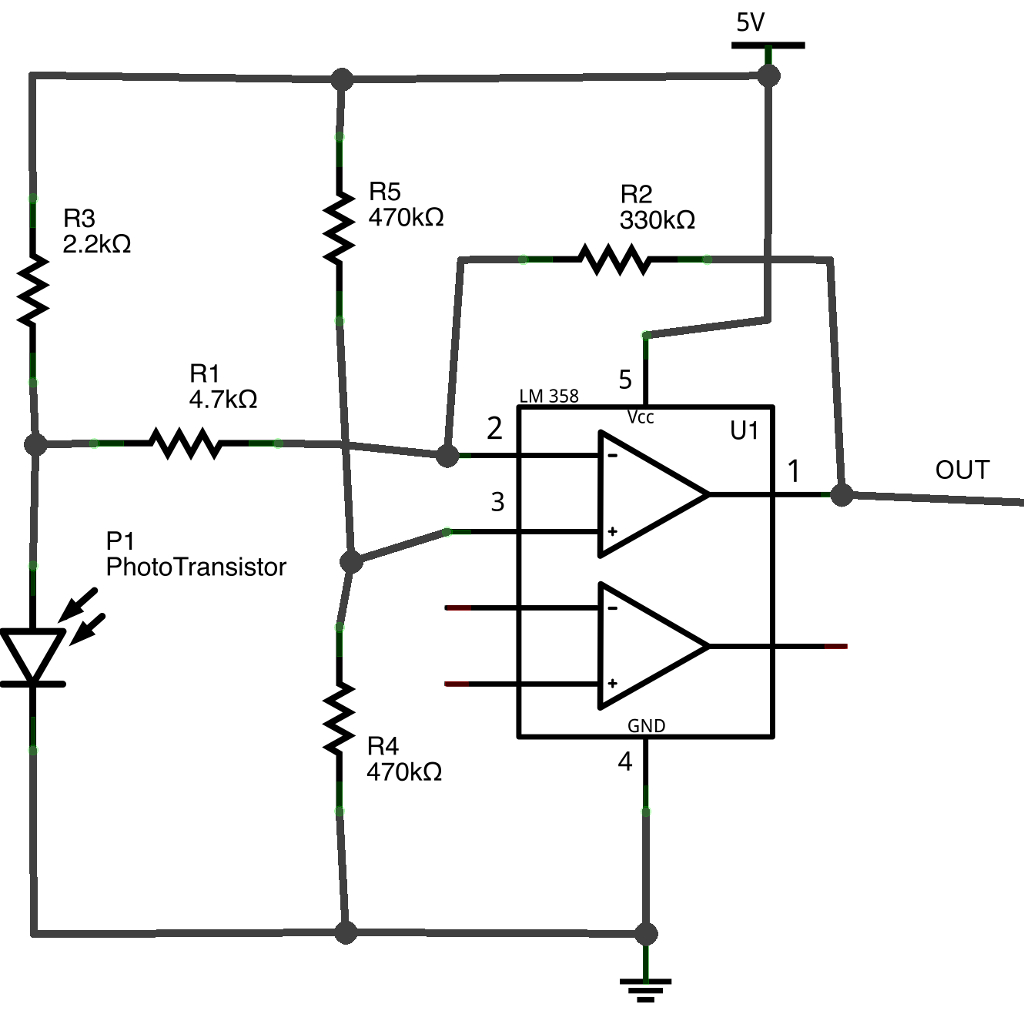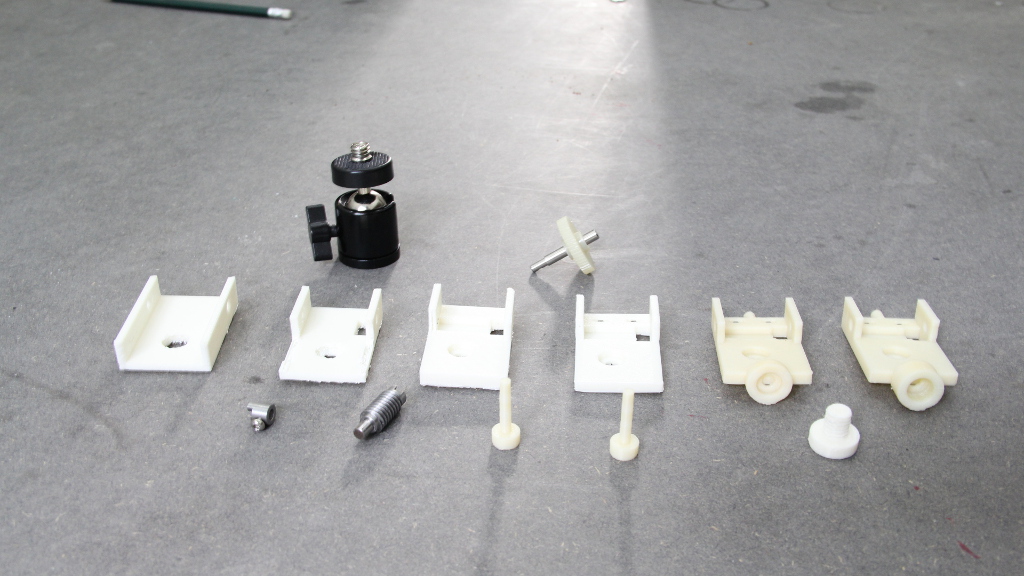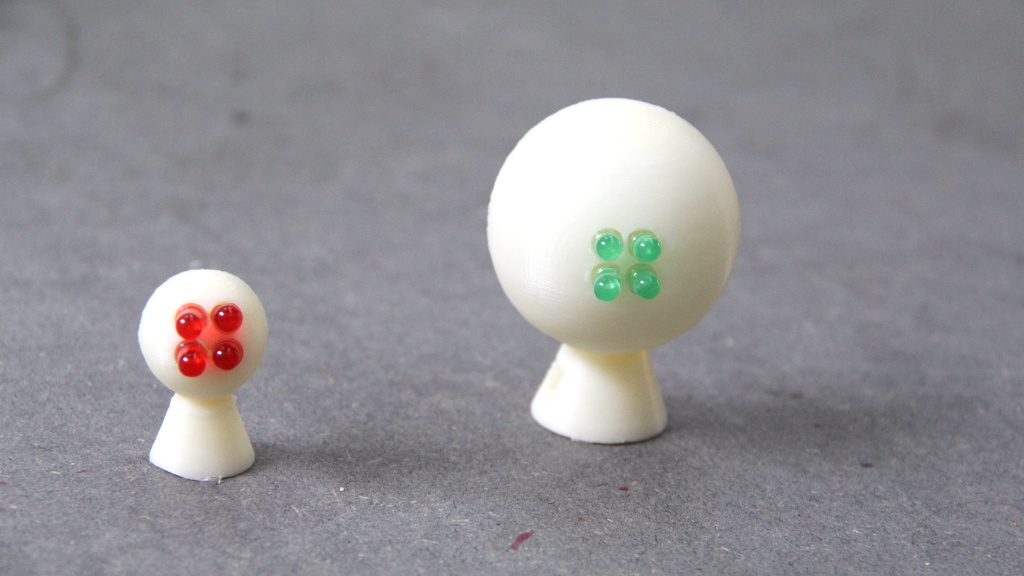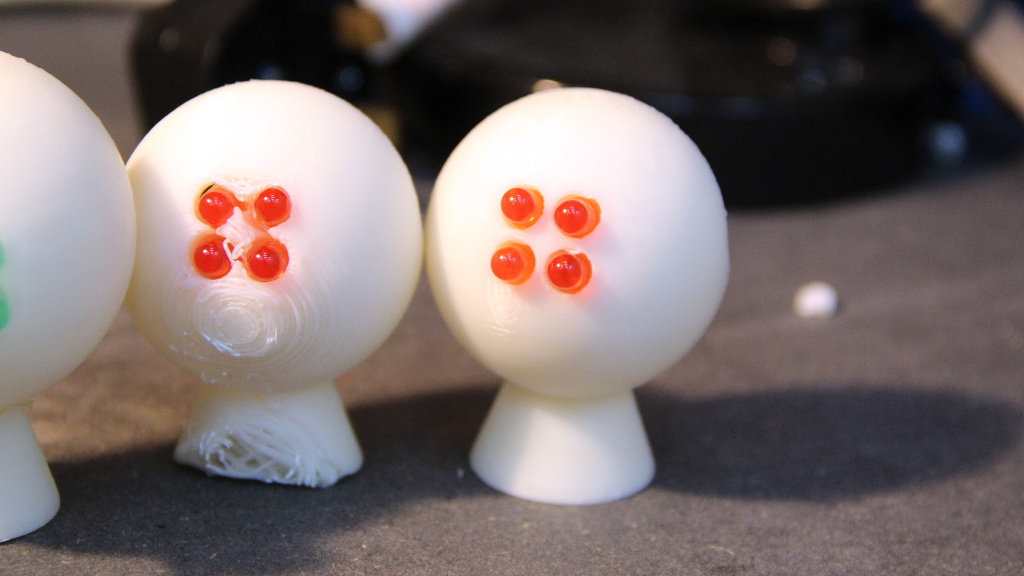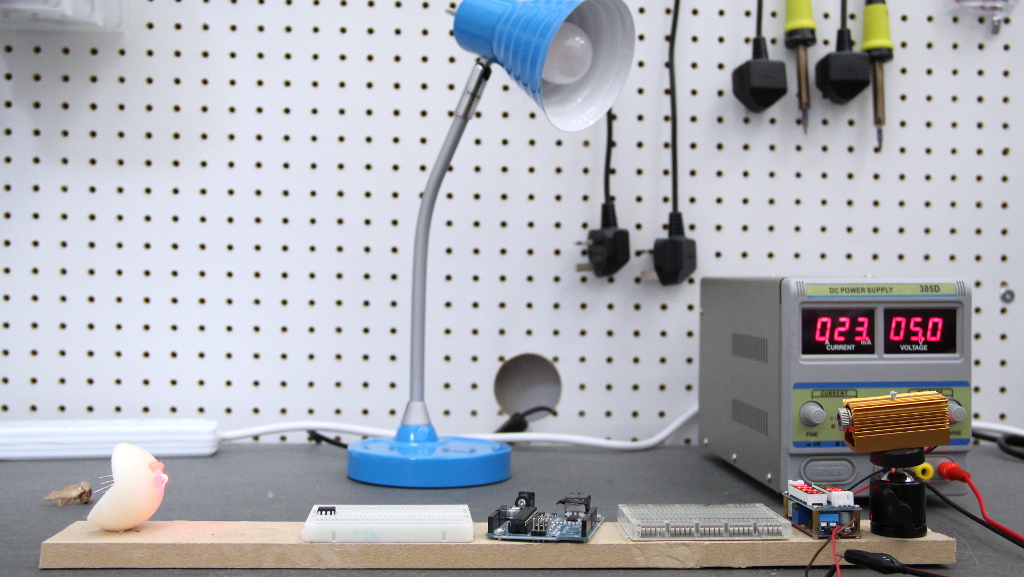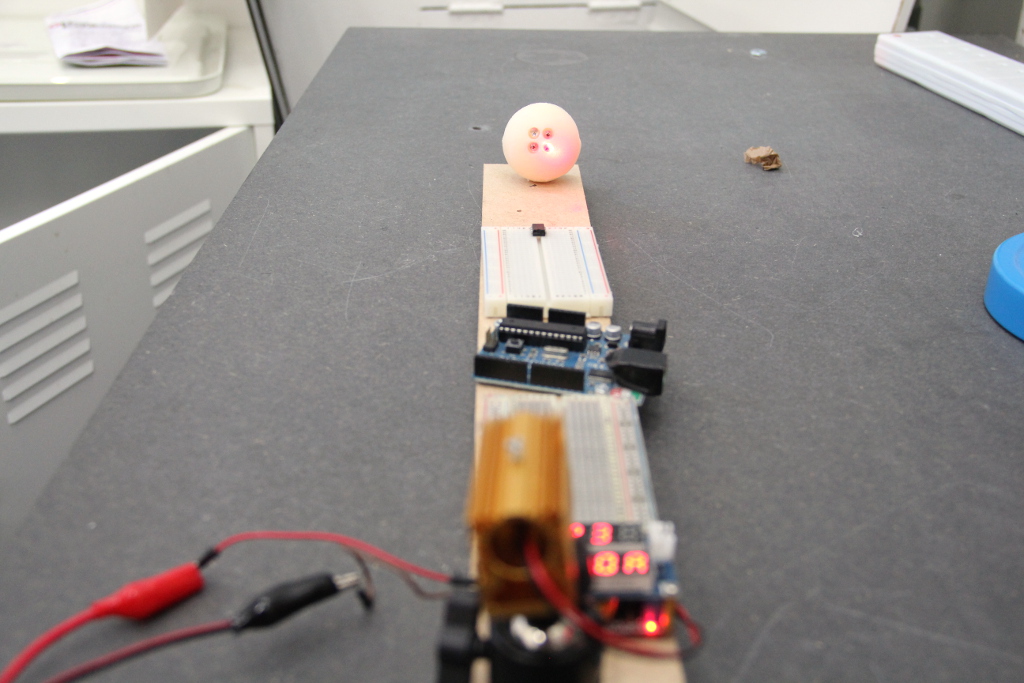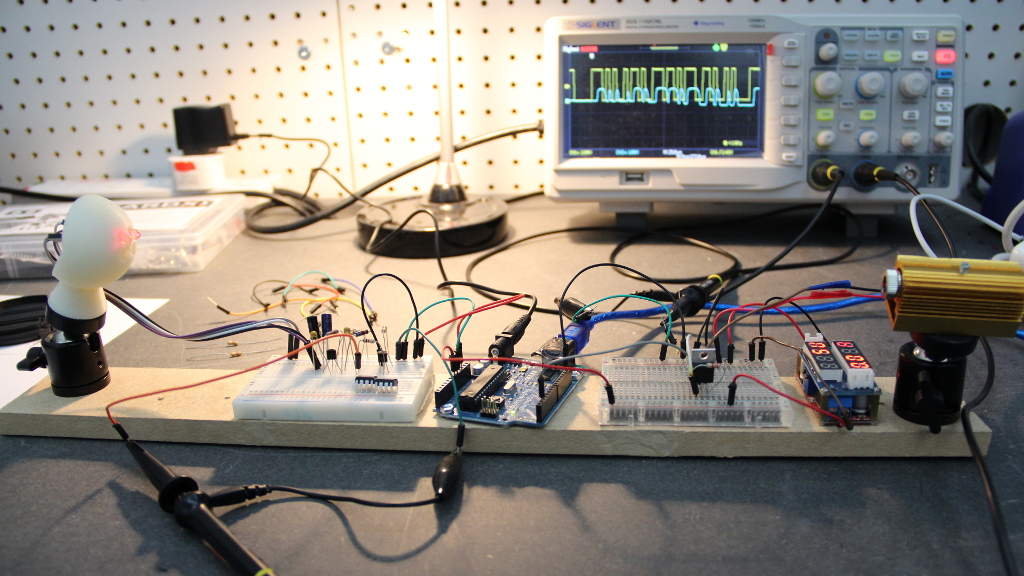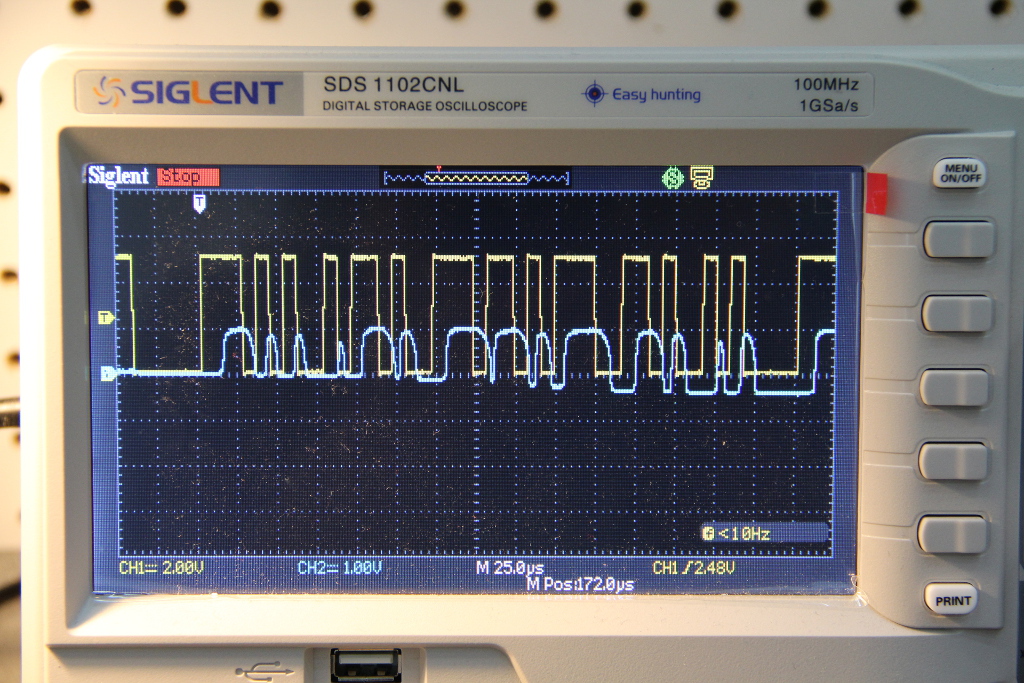
We improved our laser modem circuit and mechanical system during a residency at FACTLab throughout 2015.
Transmitter
The circuit for the transmitter has stayed pretty much the same throughout the different prototypes: an n-channel MOSFET transistor is used to modulate the laser, based on the UART Tx signal from the microcontroller. For more powerful lasers, we used a 5A constant current driver between the mosfet and the laser.
Receiver
It’s always harder to receive a signal than it is to transmit one, so our receiver circuit has had many different versions. A receiver built from MOSFETs alone wasn’t stable enough, and the receivers we initially built for Acciones Territoriales and Labic used an LM-358 op-amp to amplify a signal captured by either a photodiode or a phototransistor. These worked well, but the LM-358 doesn’t have a bandwidth wide enough to deal with signals at more than 30KHz with a voltage supply of 5V, so we started experimenting with high-speed op-amps like the LT-1226 and LT-1259. A few different configurations were considered, but in the end we used the LT-1226 with a 2N2222 NPN transistor pre-amplifier.
Pan/Tilt Mechanism
In order to facilitate the alignment between lasers and receivers we created a simple pan/tilt mechanism using worm gears and 3D-printed parts. We also started using multiple photodiodes and a small piece of translucent plastic on each receiver to diffuse the laser and avoid having to aim at a single photodiode.
